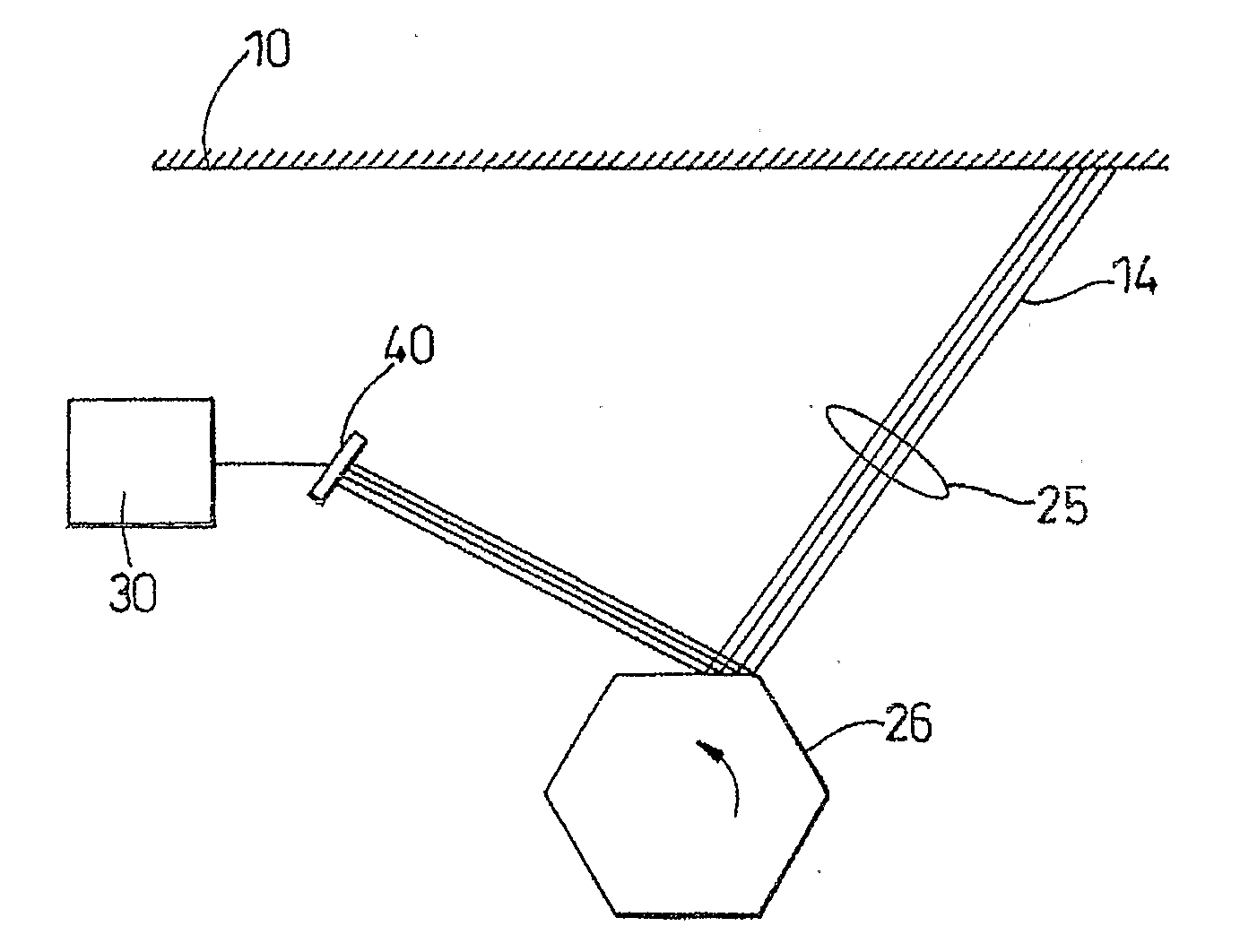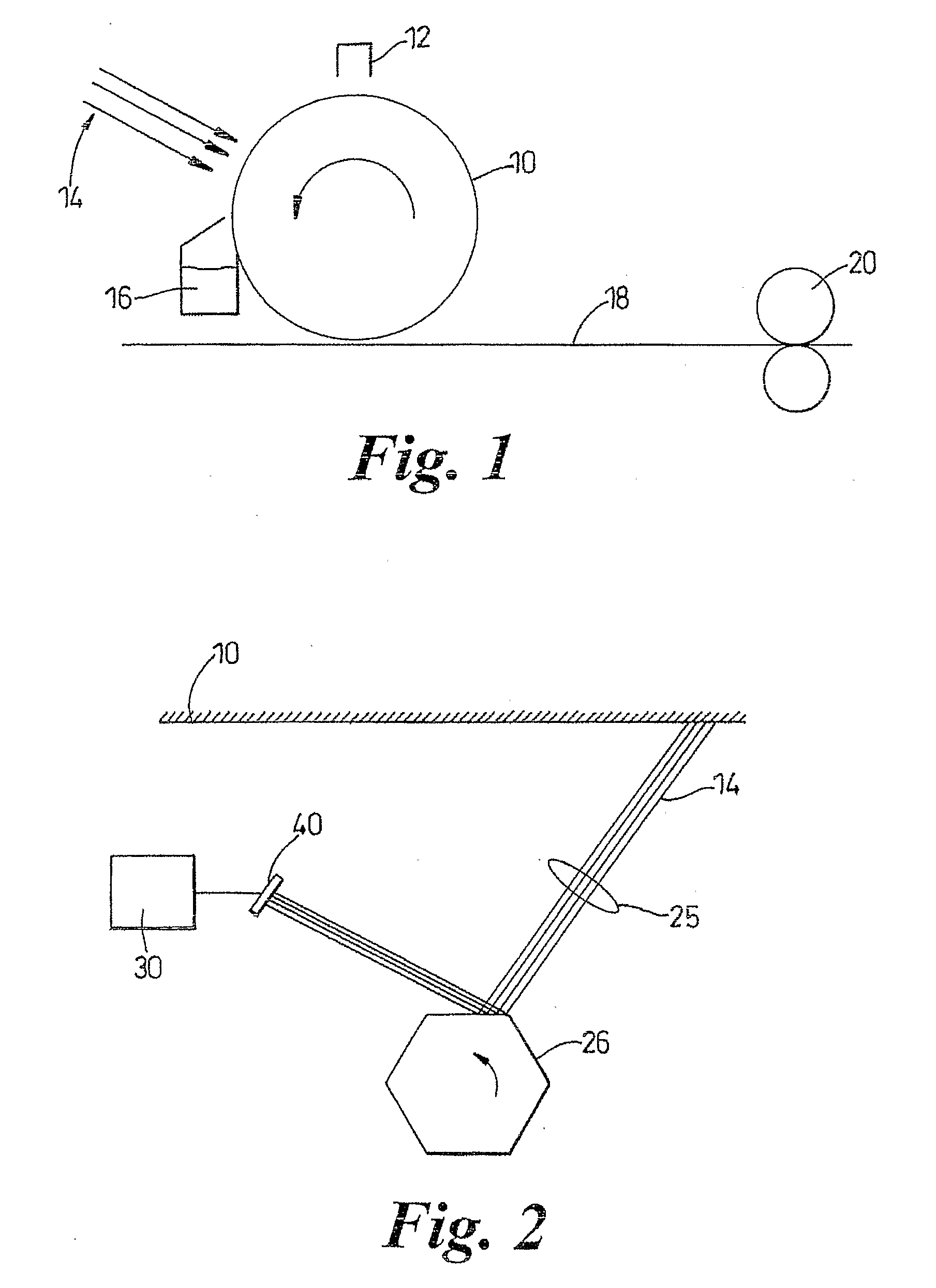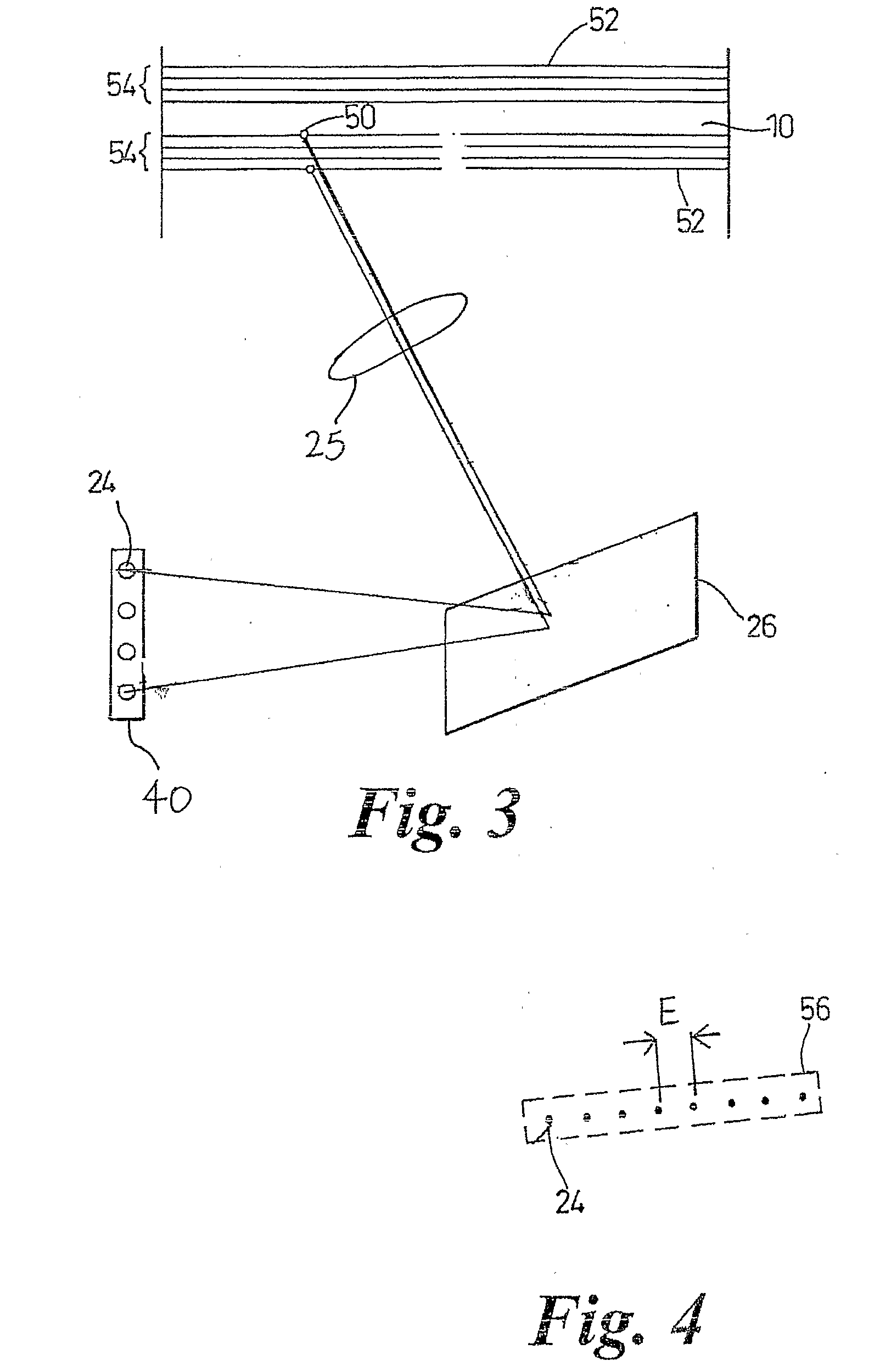Apparatus and method of reducing banding artifact visibility in a scanning apparatus
- Summary
- Abstract
- Description
- Claims
- Application Information
AI Technical Summary
Benefits of technology
Problems solved by technology
Method used
Image
Examples
Embodiment Construction
[0028]Referring to FIG. 1, a printer comprises a photoconductor 10 that generally forms the outer surface of a rotatable cylindrical drum. During the printing process the surface of the photoconductor 10 is uniformly charged with static electricity by, for example, a corona discharge 12. Portions of the photoconductor 10 are exposed with light 14 from an array of light sources 40 (illustrated in FIGS. 2 and 3). The drum is rotated so that the image to be printed is formed on the photoconductor 10. The light 14 discharges the charge on the drum in exposed areas and leaves a charged latent image. The latent image is then developed by applying a toner 16, such as a liquid ink toner (e.g. as in LEP printing) or a pigmented dry powder toner, over the surface of the photoconductor 10. The toner 16 adheres to the discharged areas of the photoconductor 10 so that the latent image becomes visible. The toner 16 is then transferred from the photoconductor 10 to a sheet of paper 18 or to some o...
PUM
 Login to View More
Login to View More Abstract
Description
Claims
Application Information
 Login to View More
Login to View More - R&D
- Intellectual Property
- Life Sciences
- Materials
- Tech Scout
- Unparalleled Data Quality
- Higher Quality Content
- 60% Fewer Hallucinations
Browse by: Latest US Patents, China's latest patents, Technical Efficacy Thesaurus, Application Domain, Technology Topic, Popular Technical Reports.
© 2025 PatSnap. All rights reserved.Legal|Privacy policy|Modern Slavery Act Transparency Statement|Sitemap|About US| Contact US: help@patsnap.com



